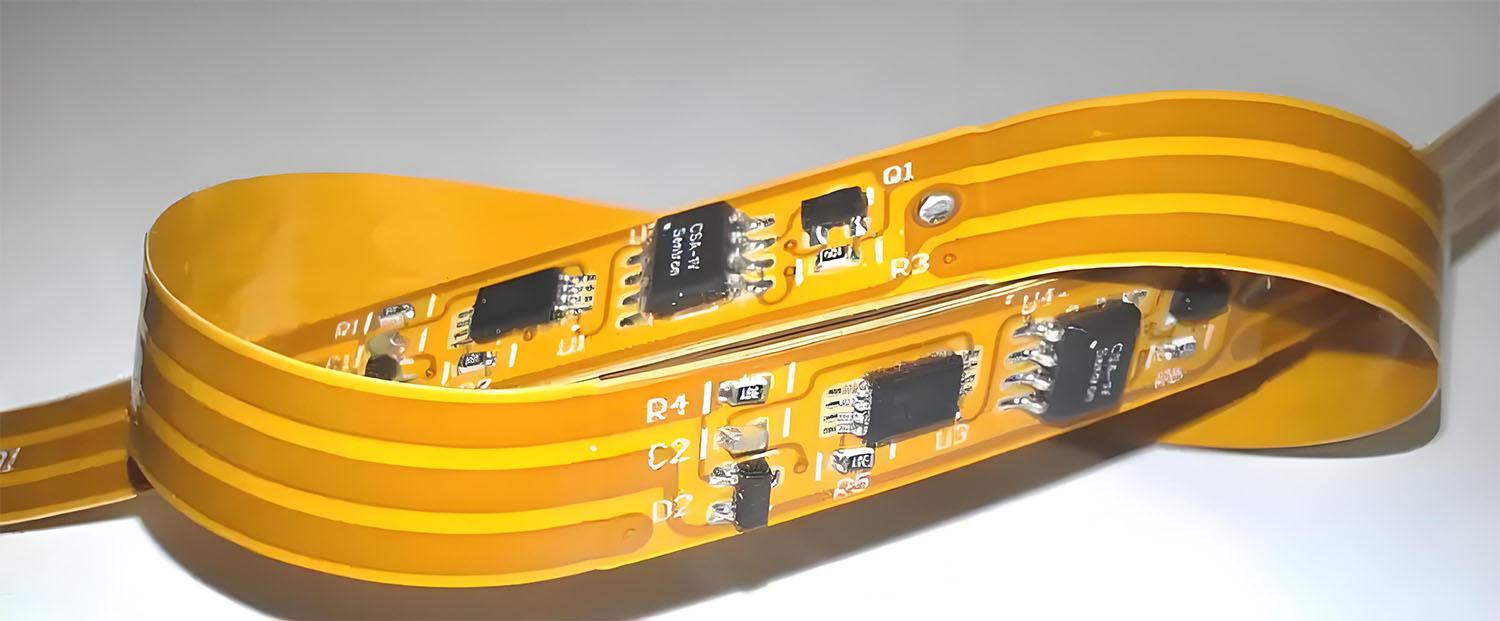Progress and Applications of Flexible Printed Circuits (FPC)

Introduction
With the rapid evolution of electronic products, particularly in consumer electronics like smartphones, tablets, and wearable devices, the application of Flexible Printed Circuits (FPC) has become increasingly prevalent. This document explores the characteristics, production processes, and applications of FPCs, with a focus on the integration of FPCs and rigid PCBs to form rigid-flex circuits.
Product Definition
Flexible Printed Circuits (FPC), also known as flexible circuits or flexible circuit boards, offer several advantages including lightweight, thin profile, excellent bendability, high wiring density, and less space limitation for wiring. Typically made from polyester film or polyimide, FPCs are manufactured by etching copper foil to form circuits. These circuits are highly reliable and offer superior flexibility.
Rigid-flex boards, combining flexible circuits with rigid PCBs, are produced by laminating these components together according to specific process requirements. This integration results in a circuit board that possesses both FPC and PCB characteristics, catering to the needs of compact and mobile electronic products.
Product Characteristics
1. Compact and Lightweight:
- Meets the demands for high-density, miniaturized, lightweight, and thin designs.
2. High Flexibility:
- Capable of moving and stretching in three-dimensional space, facilitating integrated component assembly and wire connections.
Product Applications
Flexible and rigid-flex circuits are widely used in various sectors, including:
1. Cameras and Camcorders
2. CD-ROMs and DVDs
3. Hard Drives and Laptops
4. Telephones and Mobile Phones
5. Printers and Fax Machines
6. Televisions
7. Medical Equipment
8. Automotive Electronics
9. Aerospace and Military Products
In industrial applications, rigid-flex circuits are used in military, medical, and industrial fields where precision, safety, and durability are crucial. Due to the complexity of the manufacturing process, these circuits are often produced in smaller quantities, resulting in higher costs.
In consumer electronics, digital still cameras (DSCs) and digital video cameras (DVs) are prime examples where flexible and rigid boards are utilized to enhance performance and structure. They offer benefits such as increased PCB usage area, improved circuit carrying capacity, and reduced signal transmission limits and assembly errors. Additionally, the lightweight and flexible nature of these boards significantly aids in reducing product size and weight.
FPC Production Process
The production of rigid-flex boards requires both FPC and PCB manufacturing equipment:
1. Design and Layout:
- Electronic engineers create the circuit and layout design for the flexible circuit board.
2. Processing:
- CAM engineers process the design files for manufacturing.
3. Production:
- Production lines for FPCs and PCBs are set up to produce the necessary components.
4. Lamination:
- After production, the FPCs and PCBs are seamlessly laminated together using a pressing machine according to the design specifications.
5. Finalization:
- The laminated rigid-flex boards undergo a series of detailed finishing steps before final production.
Note: Due to the complexity of combining various materials and multiple processing steps, rigid-flex boards require longer processing times and higher costs. Comprehensive inspections are typically performed before shipment.
Advantages and Disadvantages
Advantages
- Combines the benefits of both FPC and PCB, making it suitable for products with specific requirements.
- Helps in saving internal space, reducing product volume, and enhancing performance.
Disadvantages
- The complex manufacturing process and lower yield lead to higher costs and longer production cycles.
For cutting-edge applications in electronics, including those by Gekunflex, understanding these characteristics and processes is essential for optimizing product design and functionality.
Summary
Flexible Printed Circuits (FPC) and rigid-flex boards have become integral to modern electronic devices, such as smartphones and wearable technology, due to their compact size, lightweight, and flexibility. Combining FPCs with rigid PCBs creates rigid-flex circuits that offer the advantages of both technologies, catering to the need for high-density, flexible, and reliable circuit solutions. Despite the benefits, the complex manufacturing process and higher costs associated with these circuits can be a challenge. Companies like Gekunflex leverage these advancements to enhance product performance and design, addressing both consumer and industrial application needs effectively.


- Art
- Causes
- Crafts
- Dance
- Drinks
- Film
- Fitness
- Food
- Games
- Gardening
- Health
- Home
- Literature
- Music
- Networking
- Other
- Party
- Religion
- Shopping
- Sports
- Theater
- Wellness


